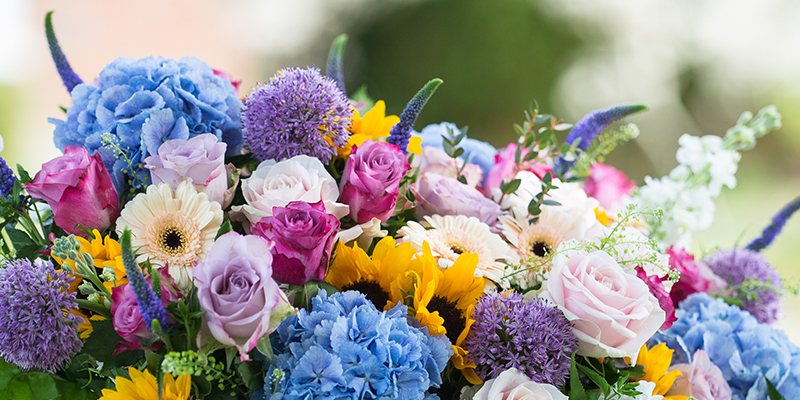
Unusual flowers and plants are often hard to come across, especially if you live in a city.
How many strange plants and flowers have you seen around your town? Chances are it's not that many. There's a ginormous world out there just waiting to be explored and we're just fascinated with what we've found!
Of course, if you have a job, bills to pay or kids to take to school it isn't that easy to just jet set off on holiday to hot countries. So, we've delved deep into the tropics and jungles to see what lurks behind some of Mother Earth's most unusual flowers.
It's amazing how many odd plants and flowers grow in the wild. To make things simple, we've narrowed it down to 6 of the most colourful and unusual flowers from across the globe.
Flame Lily (Gloriosa)
Native to the tropics of Asia and Africa, Flame Lilies are climbing plants that can grow up to 3 metres tall. They bloom with flame-like flowers in fiery reds, oranges, and yellows. Despite their name, they're not actually true lilies, as they don't grow from a bulb.
Some common names include Gloriosa Lily, Flame of the Woods, Flame Lily, Climbing Lily and Glory Lily. The unusual and exotic flowers of the Gloriosa Lily have been featured on a US postage stamp and are the national flower of Zimbabwe, Africa.
Despite their tropical origins, you can enjoy these exotic flowers in the UK - plant them in your garden and they'll bloom in the summer.
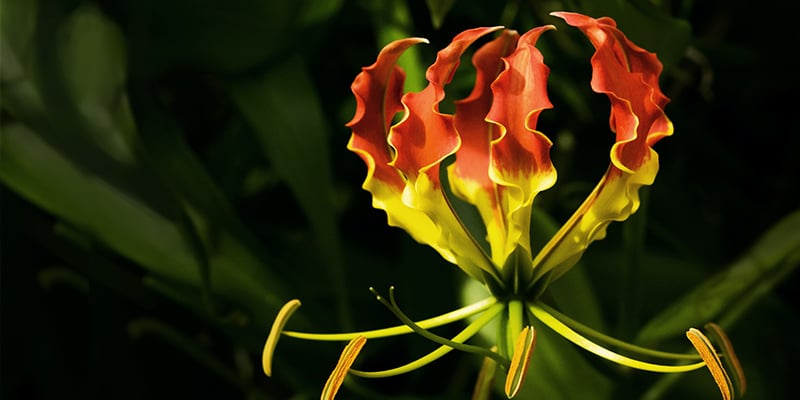
Lobster Claw (Heliconia)
Heliconia are large-leaved exotics with vibrant coloured flower bracts reminiscent of 'lobster claws' and are related to bananas, cannas and gingers. Their flowers are tucked away inside the bracts - they rely on hummingbirds for pollination, and their long beaks mean they can easily tuck right in.
These plants come in hundreds of stunning and ornate forms; there are about 185 species and 500 varieties of Heliconia. When grown directly in the ground, Heliconia rostrata can reach upwards of 10-15 inches tall.
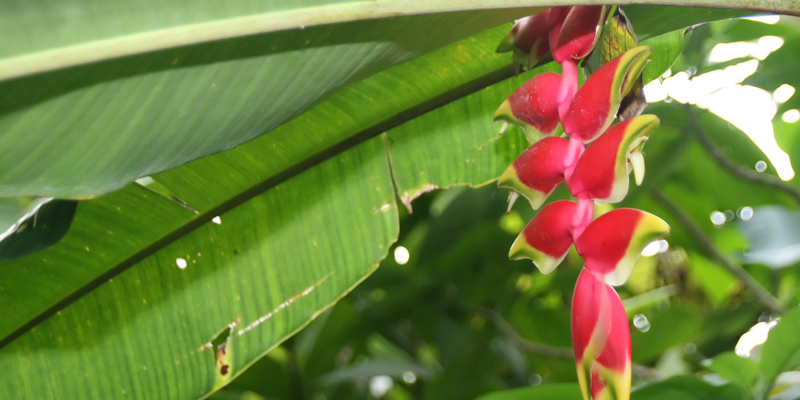
Jade Vine (Strongylodon Macrobotrys)
This turquoise (or jade) beauty is one of the world's most uniquely coloured flowers. It's native to the rainforests of the Philippines, where its luminous colour helps it to attract its pollinators - bats! Fully grown, it can reach lofty heights of over 12 metres.
Sadly, in the wild, the Jade Vine is considered vulnerable to extinction due to extensive deforestation.
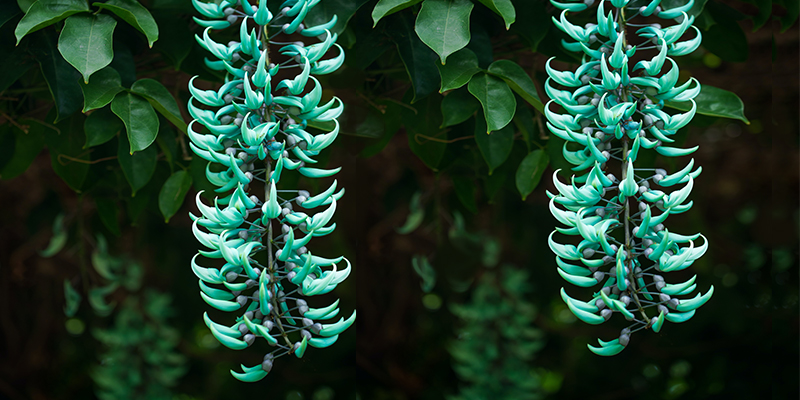
Sea Poison Tree (Barringtonia Asiatica)
A species of Barringtonia, common along the coasts of the Pacific Ocean and Indian Ocean. They have a sickly sweet smell that attracts bats and moths at night. It is grown along streets for decorative and shade purposes in some parts of India. In the Philippines the heated leaves are used to treat stomach ache and the seeds to rid the body of intestinal worms.
Sea Poison Trees produce a fruit known as Box Fruit, and it's spread in the same way as coconuts. The fruits fall into the sea, where they're carried to shores by the tides.
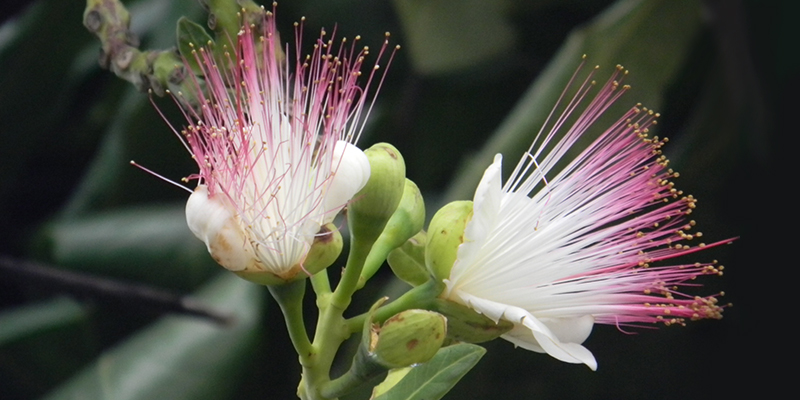
Corpse Lily (Rafflesia Arnoldii)
The rafflesia is most famous for being the largest individual flower in the world. It can grow to a massive 3 feet across and weigh up to 11 kilos! It is found growing on the jungle floor in the rainforests of Indonesia, Malaya, Borneo, Sumatra, and the Philippines.
The plant itself is parasitic, and doesn't have any leaves, stems, or roots. Instead, it lives inside host vines, meaning it's only visible at all when the flower emerges. The flower blooms for just a few days, before it collapses and decays. It's also notoriously difficult to predict when the rafflesia will bloom, so they're a very rare sight in the wild.
It's nicknamed the Corpse Lily for the unpleasant smell it emits, apparently similar to that of rotting flesh - gross! The pungent odour does serve a purpose though - it relies on flies and carrion beetles for pollination, and they love the smell.
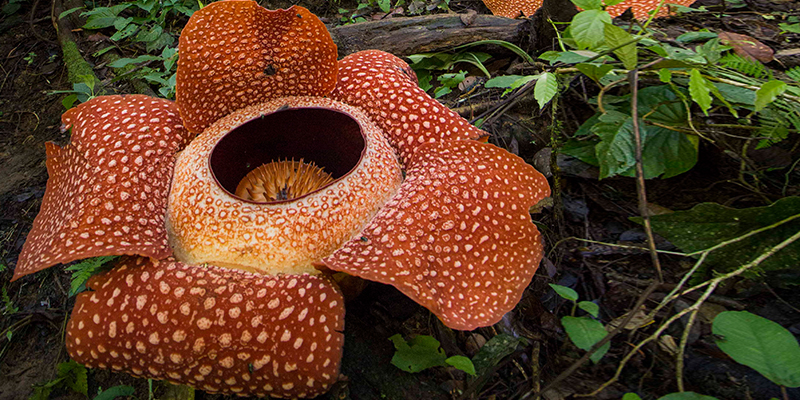
Corpse Flower (Titun Arum)
You've met the world's biggest flower, so now meet the tallest! Found wild only in the rainforests of Sumatra, the Titun Arum flower can reach gargantuan heights of over 10 feet. It's related to calla lilies, and has similar flowers - but at a much larger scale!
Much like Rafflesias, they bloom only very rarely (every seven to nine years) and they only stay in bloom for a day or two. As they're pollinated by carrion beetles and flies, they also have a very unpleasant smell of decay, garlic, and rotting fish.
As well as being the tallest flower, they also have the world's heaviest underground base stem, or corm. The corm can weigh up to 45kg and stores energy - it needs a lot to produce such gigantic flowers!
Although it's rare in the wild, lots of botanical gardens have successfully cultivated this flower, including the Eden Project and Kew Gardens. Of course, you have to be lucky to be there on a day it's in bloom!
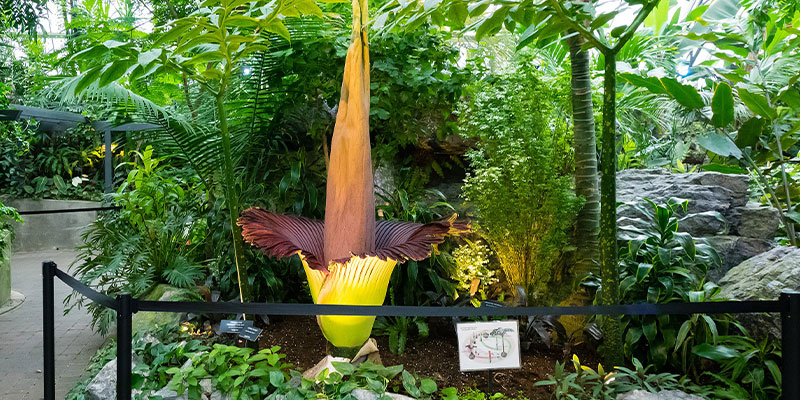

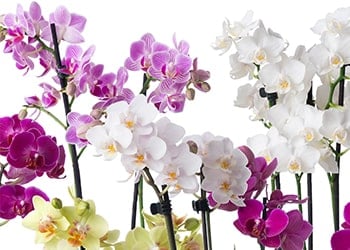




